Green buildings and sustainable construction
We demonstrate environmental best practices through the design, construction and operation of our facilities.
Our buildings
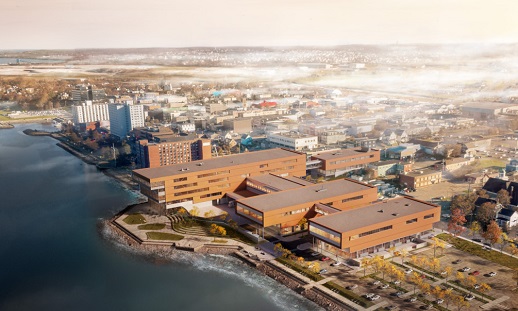 Sydney Waterfront Campus
Sydney Waterfront Campus
Our new Sydney campus is scheduled to open in September 2024. This 300,000-square-foot building will relocate NSCC’s Marconi Campus to the Sydney waterfront, revitalizing the downtown core of Sydney.
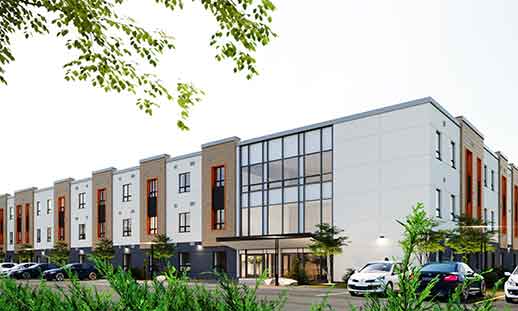 Akerley Campus Housing
Akerley Campus Housing
Akerley Campus’ new campus housing will open in September of 2024, offering accommodation for 98 students. This building has integrated a number of green building design elements and is striving for LEED certification.
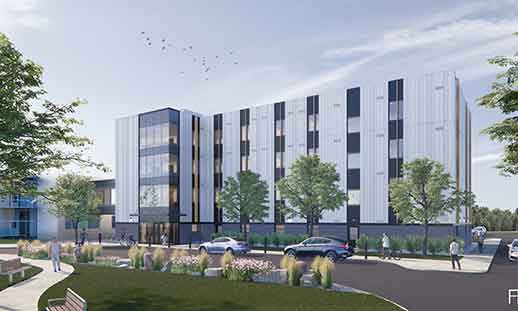 Pictou Campus Housing
Pictou Campus Housing
Pictou Campus’ new campus housing will open in September of 2024, offering accommodation for 50 students. This building has integrated a number of green building design elements and is striving for LEED certification.
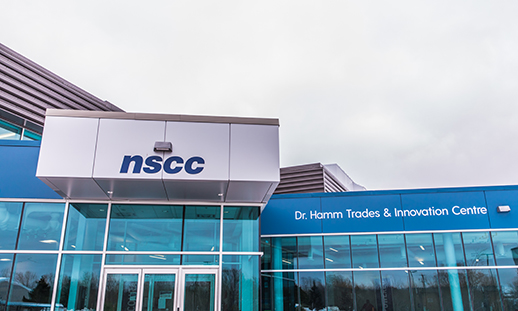 Hon. Dr. John Hamm Trades and Innovation Centre
This LEED Gold certified building features an HVAC system that’s heated by a south-facing solar wall. The facility also houses systems designed to reduce energy and water consumption.
Hon. Dr. John Hamm Trades and Innovation Centre
This LEED Gold certified building features an HVAC system that’s heated by a south-facing solar wall. The facility also houses systems designed to reduce energy and water consumption.
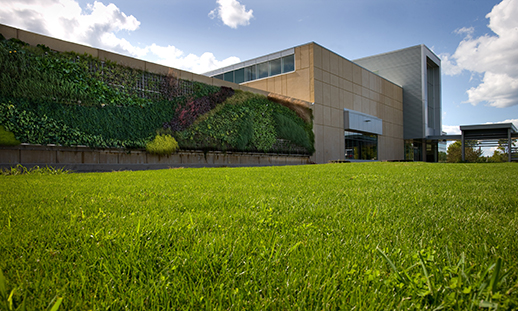 Centre for Built Environment
The Centre for the Built Environment, a LEED Gold certified 'living building,’ is used to educate the NSCC community, as well as the general public, on sustainable best practices in building construction. It features several renewable energy sources, such as photovoltaic, wind power, geothermal and solar walls. The facility demonstrates ecological design practices that are restorative of natural ecosystems.
Centre for Built Environment
The Centre for the Built Environment, a LEED Gold certified 'living building,’ is used to educate the NSCC community, as well as the general public, on sustainable best practices in building construction. It features several renewable energy sources, such as photovoltaic, wind power, geothermal and solar walls. The facility demonstrates ecological design practices that are restorative of natural ecosystems.
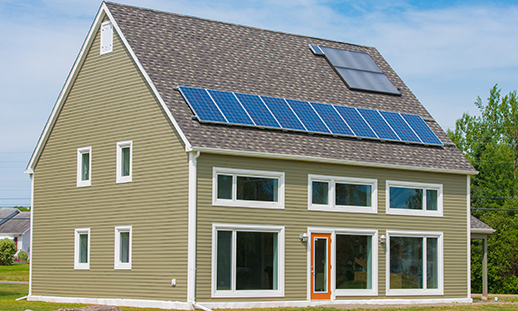 Pilikan House
Pilikan House
Pilikan House is a 'living lab' and demonstration site, where students can learn how to incorporate sustainability into residential construction. Requiring very little energy to run, the house relies on air-tight construction, extra insulation, triple glazed windows and passive solar heating. Solar photovoltaic power generates electricity to power lights and appliances.
Major renovation projects
Not only do we build new buildings to LEED certification standards, we constantly upgrade our infrastructure to make our campuses more energy efficient and sustainable.
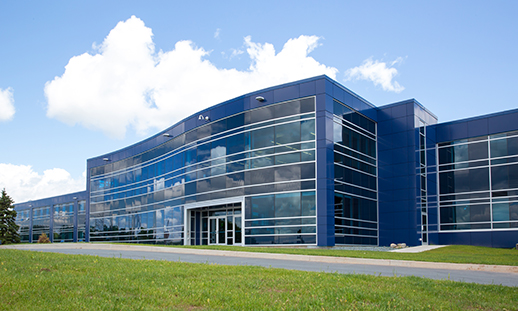 Curtain walls for efficiency
Curtain walls for efficiency
The outermost walls of a building play a crucial role in minimizing the heating and cooling needs required to maintain comfortable temperatures within the building. We have incorporated curtain walls, which are exterior building coverings typically made of glass, metal, or other lightweight materials, into several NSCC buildings to enhance energy performance and increase efficiency. The Akerley Campus curtain wall upgrade has contributed to an overall energy intensity decrease of 33% since 2008. Similar upgrades at Lunenburg Campus were completed in 2017 and at the Truro, Burridge, and Cumberland Campuses in 2021.
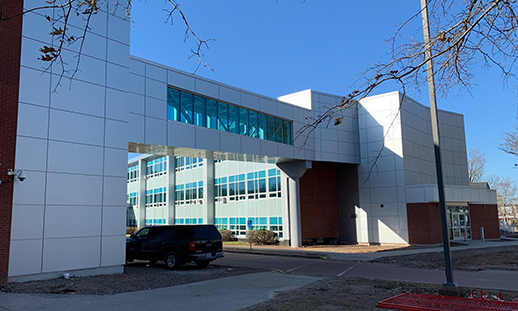 Accessibility upgrades
A new pedway was installed at Truro Campus, connecting McCarthy Hall and Forrester Hall. New elevators were installed at each end of the pedway, giving users with physical mobility challenges greater access between these key academic facilities.
Accessibility upgrades
A new pedway was installed at Truro Campus, connecting McCarthy Hall and Forrester Hall. New elevators were installed at each end of the pedway, giving users with physical mobility challenges greater access between these key academic facilities.

